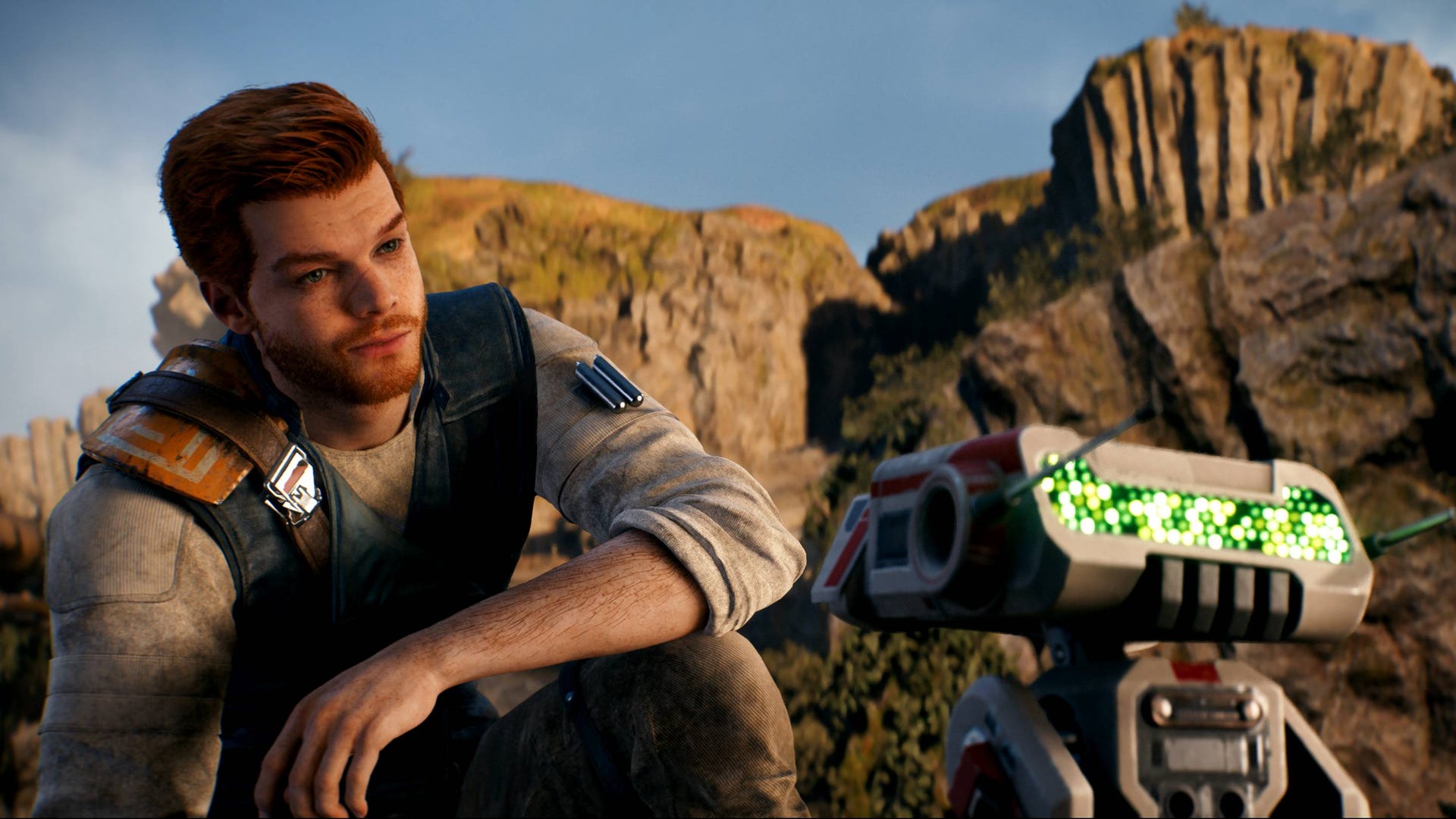
It’s easy to think of Star Wars Jedi: Survivor in terms of its predecessor. Jedi: Fallen Order was broadly thought of as a good game with a few snags holding it back, namely a few disruptive technical issues, an incomprehensible map, and an overreliance on backtracking through lengthy platform sequences (not helped by, you know, the incomprehensible map). Fix those, you reckon, and there’s probably a very good game here.
Mostly, Jedi: Survivor has fixed all that. Or at least patched it up. There’s much less backtracking this time, thanks to new and plentiful fast travel points. The map is clearer, since sacrificing the Star Wars-iness of the last game’s flickering holo effects for this one’s more opaque visual helps a fair bit. And the technical issues are less catastrophic, although things can still get pretty rough at the seams – think hands, hair, and various items regularly clipping through surfaces, and some frantic pop-in and cloak-flapping when coming in and out of cutscenes. Plus one hard crash – but broadly, those gripes have been tended to.
On top of that, Jedi: Survivor’s systems have expanded beyond Fallen Order’s. Instead of adding a few potted plants to Cal Kestis’ ship, after you’ve collected their seeds from the wild, you now have an entire roof garden on the new planet, Koboh, that you can pootle about with. Instead of new people you meet during the story joining you on the ship as major characters, NPCs will now be recruited to Greeze’s Koboh bar, Pyloon Saloon. There’s a new mini-game, a kind of highly simplified auto-chess battler, where you can deploy units that you’d defeated in battle and scanned with your lovable droid, BD-1, to unlock them.




